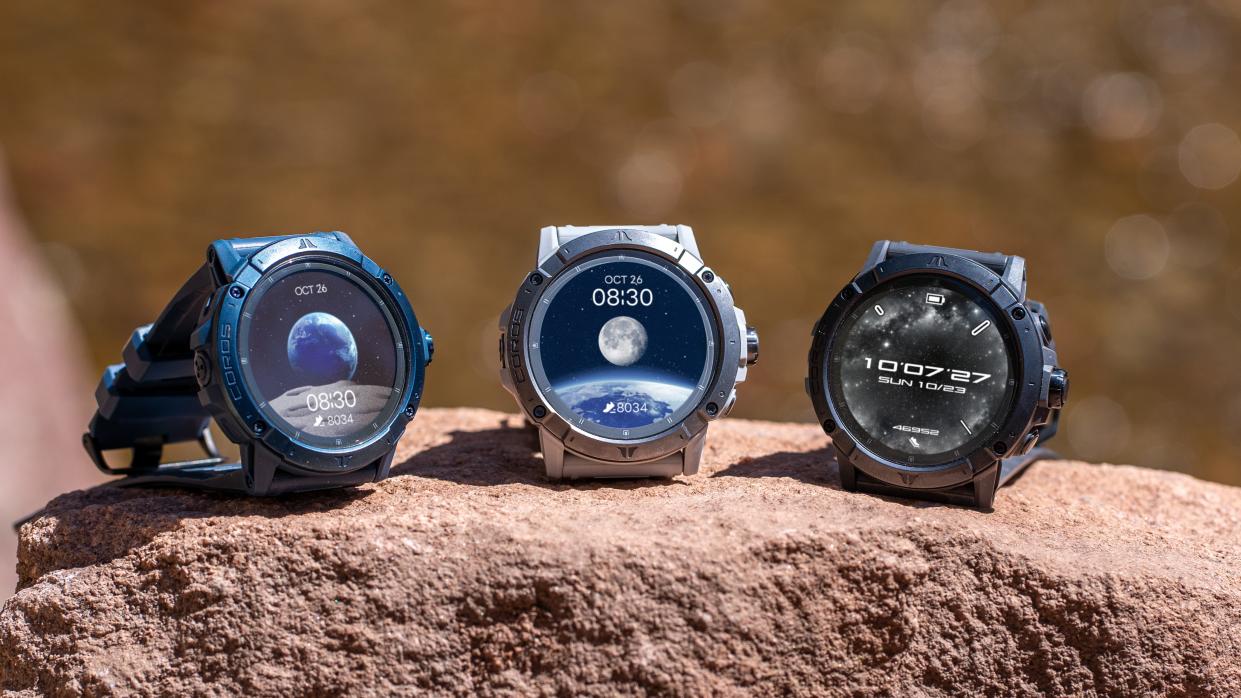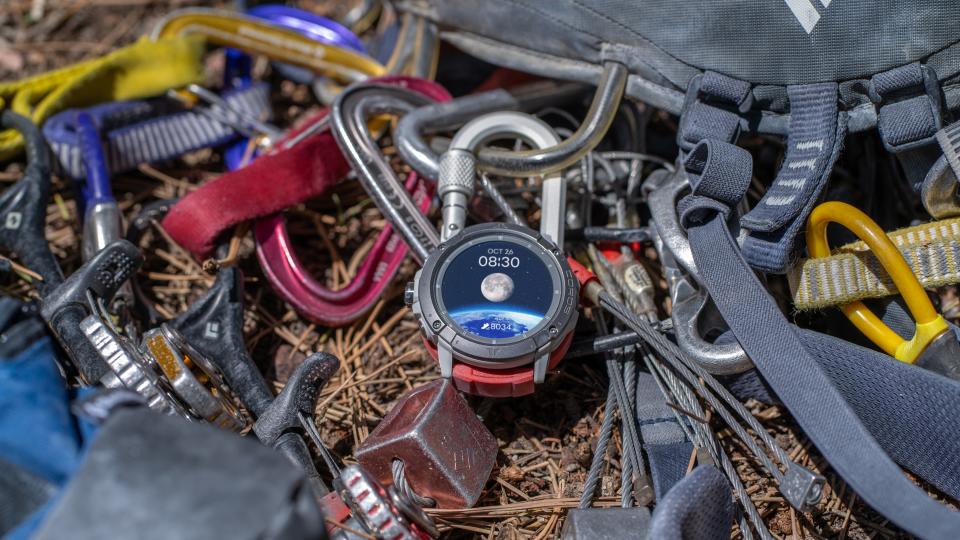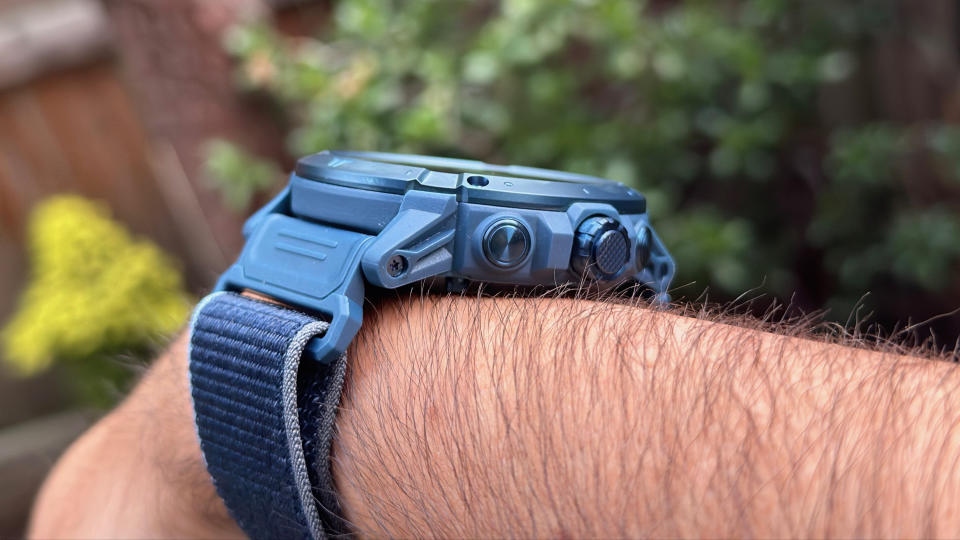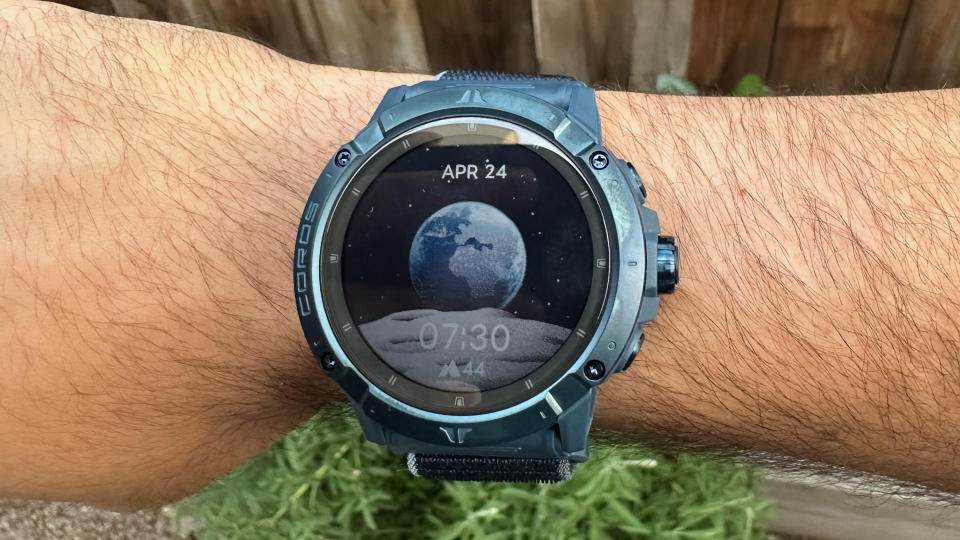The 46-day COROS VERTIX 2S targets Alex Honnold-esque adventurers; here are our early impressions

What you need to know
The COROS VERTIX 2S is an adventurer's watch announced on April 25 and shipping on April 27 for $699.
Replacing the original VERTIX 2, it has a redesigned GPS antenna, revamped HR sensor, and a slightly lighter case, but slightly shorter battery life.
Its epic battery life, MIP display, and bulky-but-rugged design make this device best suited for people spending days (or weeks) in nature at a time.
The COROS VERTIX 2S has arrived nearly three years after the VERTIX 2, and not much has changed on the surface. It's another "Adventure Watch" for climbers, XC skiers, and mountaineers with epic battery life and dual-frequency tracking, with the same price, ruggedness, and MIP display. The differences between them are subtle, but potentially significant.
While the 2021 VERTIX 2 had dual-band and multi-GNSS tracking, COROS says that the VERTIX 2S has a "redesigned" antenna built to "improve positioning accuracy in dense city/ mountain environments." They also claim to have developed an "optimized GPS algorithm" to combat issues with outdoor climbing maps on steep slopes with the original VERTIX 2.
In addition, the COROS VERTIX 2S receives the same optical heart rate monitor as the COROS PACE 3, with five LEDs and four photodetectors. While it draws more battery life, it does better accuracy-wise — the PACE 3 did quite well in our recent HR and fitness test — and will handle stats like daily stress better.
Because of these improvements, the original VERTIX 2 beats the 2S battery in days (43 vs. 36 days with sleep tracking), GPS hours (127 vs. 118), and dual-frequency GPS hours (49 vs. 43).

While that might seem like a downgrade, the VERTIX 2S still matches or beats many of the best MIP watches out there for longevity. The Fenix 7X Pro Solar, for example, lasts 37 days or 122 GPS hours, only equaling the VERTIX 2S if it has a steady source of sunlight.
The VERTIX 2 and 2S largely share the same specs, except that the 2S is 2g lighter with the nylon band, and comes in new colors. COROS will only sell the 2S from now on, deprecating the VERTIX 2.
Having only briefly tested the VERTIX 2S, I can't speak to its hardcore adventuring features yet. Keep an eye out here this Sunday for a GPS and heart rate accuracy test against some other smartwatch flagships. I can still give some early info and impressions, however.
The COROS VERTIX 2S comes in a recyclable container — it's made of recycled materials, but is also designed to be reused as storage — and ships with both nylon and silicone straps, with a Quick Fit connector.
Given how heavy the VERTIX 2S is, you'll want to default to the nylon option, which makes it feel somewhat manageable, on par with my Apple Watch Ultra 2 despite being significantly thicker. That's probably thanks to the polymer materials, whereas most all-steel or titanium watches take more getting used to.
Shipping in Space (black), Moon (white), and Earth (blue), the VERTIX 2S is pre-installed with a watch face inspired by your chosen color. Our review unit, for example, has a spinning Earth viewed from the moon's surface, and it's a cute touch — though light on actual data.

As with most COROS watches, your experience will depend on your perspective on digital crowns. I'm used to most "serious" fitness watches having up/down buttons, but COROS has the center dial for rotating and selecting, with the top button for the backlight and bottom button for backing out and settings.
The VERTIX 2S is a niche device, as the price suggests. For a couple hundred extra compared to, say, the Garmin Instinct 2X Solar, you get a full-sized display for offline mapping, waypoints with turn-by-turn navigation, and proper widgets during activities. Mountaineers will be able to check their altitude performance or real-time storm alerts, while climbers will appreciate features like fall detection or auto pitch-type detection.
That's all vitally useful for a certain class of athlete, but an everyday runner like me is better suited towards the PACE 3 or APEX 2 Pro. I can't necessarily put these VERTIX 2S features through their paces unless I drive hours to a ski slope or (die trying to) scale a sheer cliff face or boulder.

If you prefer MIP displays to AMOLED to get that insane battery life, then the VERTIX 2S will fall right in your wheelhouse. I'm not an MIP fan, personally, but this display is high-res enough to be comfortably readable, and it looks great outdoors. Indoors, I had to dive into the settings to activate the all-day gesture backlight, just so I could see what time it was without having to press a button.
Overall, if you already own the VERTIX 2 and like it, then I can't say for certain if you'll want to upgrade for another $699 / €699 / £599. Better heart rate accuracy and GPS maps make a real day-to-day difference, in theory; I'll report back soon once I know whether it's especially accurate in real-life testing.
